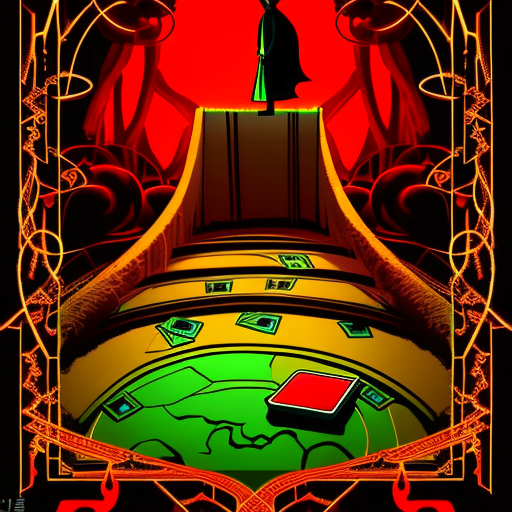The Solitaire Mystery: A Journey of Self-Discovery and Connection
In “The Solitaire Mystery” by Jostein Gaarder, a young boy named Hans Thomas embarks on a whimsical and thought-provoking journey to find his missing father. Along the way, he encounters a series of peculiar characters and experiences that challenge his perception of reality and unravel the mysteries of life. Through the use of captivating storytelling and philosophical musings, Gaarder explores themes of identity, connection, and the search for meaning in a world filled with enigmatic puzzles.
A Mysterious Journey Begins
The story begins with Hans Thomas receiving a mysterious birthday present from his absent father—a magnifying glass. Intrigued by the gift, Hans Thomas sets off on a journey with his father’s old car, determined to solve the riddle of his father’s disappearance. As he travels through Europe, he encounters a talking miniature solitaire card, which becomes his companion and guide throughout the adventure.
An Array of Peculiar Characters
During his journey, Hans Thomas encounters a host of eccentric characters who each contribute to his understanding of the world. From the philosophical truck driver who questions the nature of reality to the enigmatic priest who challenges his beliefs, these encounters force Hans Thomas to confront his own assumptions and broaden his perspective. Through these interactions, Gaarder delves into complex philosophical concepts, such as existentialism and the nature of time, in a way that is accessible and engaging.
A Tapestry of Stories and Puzzles
As Hans Thomas delves deeper into his quest, he becomes entangled in a web of interconnected stories and puzzles. Gaarder weaves together narratives from different time periods and cultures, including the story of a young girl named Sophie from Gaarder’s previous novel “Sophie’s World.” These narratives serve as metaphors for the larger questions of existence and the nature of reality that Hans Thomas grapples with throughout his journey.
Throughout the book, Gaarder seamlessly blends elements of fantasy and reality, challenging the reader to question the boundaries between the two. The solitaire card, for example, serves as a symbol of Hans Thomas’ search for connection and meaning, as well as a metaphor for the interconnectedness of all things. Gaarder’s lyrical prose and vivid imagery create a rich and immersive reading experience that invites readers to ponder the deeper mysteries of life.
Key Takeaways:
- Identity and self-discovery: The journey of Hans Thomas serves as a metaphor for the search for identity and self-understanding.
- Connection and interdependence: The interconnectedness of the characters and narratives highlights the importance of human connection and the interdependence of all living beings.
- Philosophical exploration: Gaarder’s use of philosophical concepts and musings encourages readers to contemplate the deeper questions of existence and the nature of reality.
“The only thing we require to be good philosophers is the faculty of wonder.”
In “The Solitaire Mystery,” Jostein Gaarder takes readers on a captivating and thought-provoking journey through the mind of a young boy searching for his missing father. Through a tapestry of stories, puzzles, and encounters with peculiar characters, Gaarder explores profound philosophical concepts while inviting readers to contemplate the mysteries of life. This enchanting novel reminds us of the importance of self-discovery, connection, and the wonder that lies within us all.












